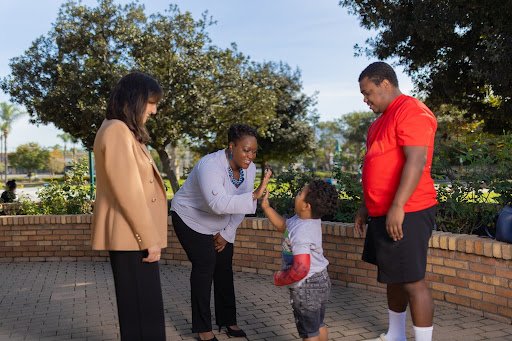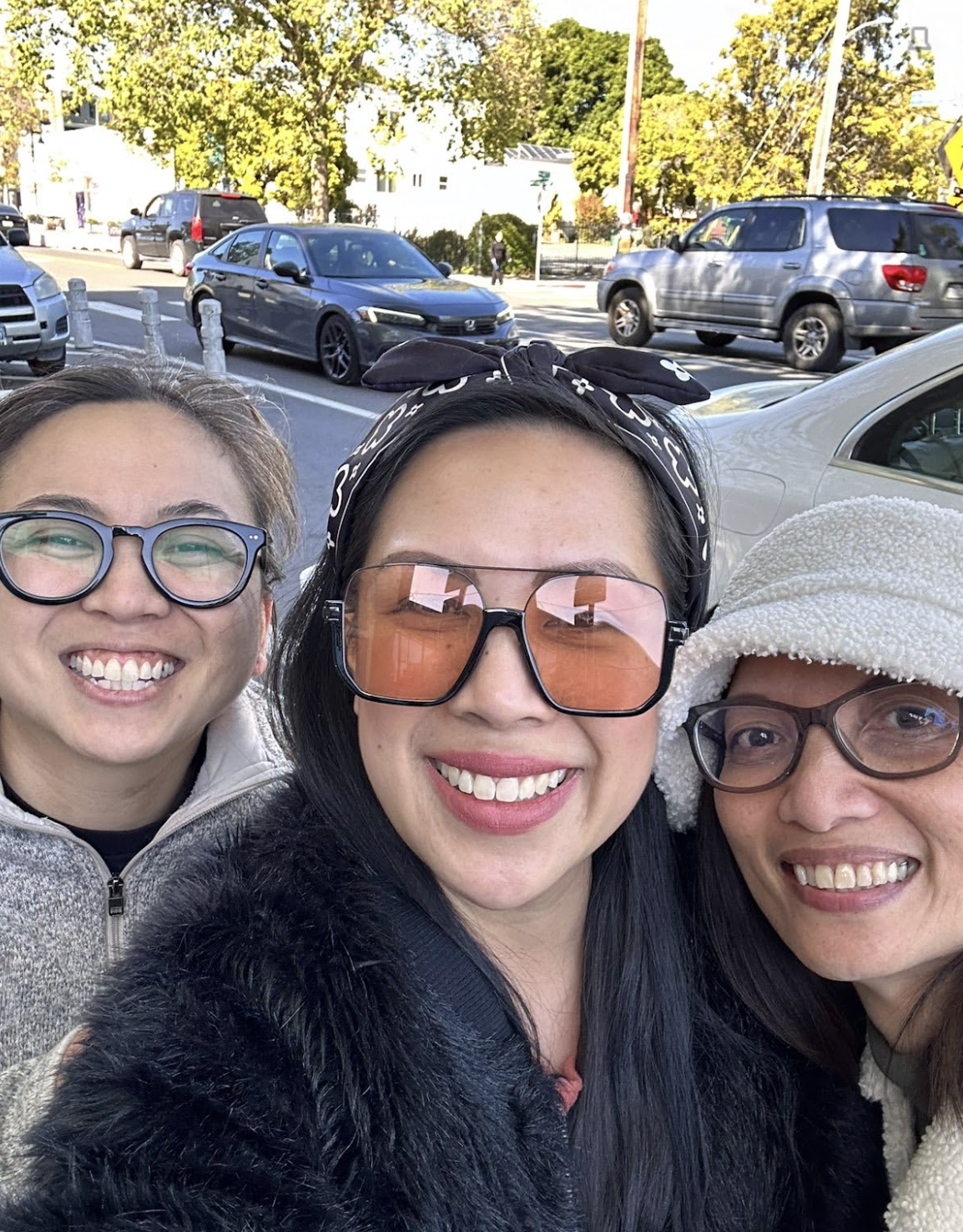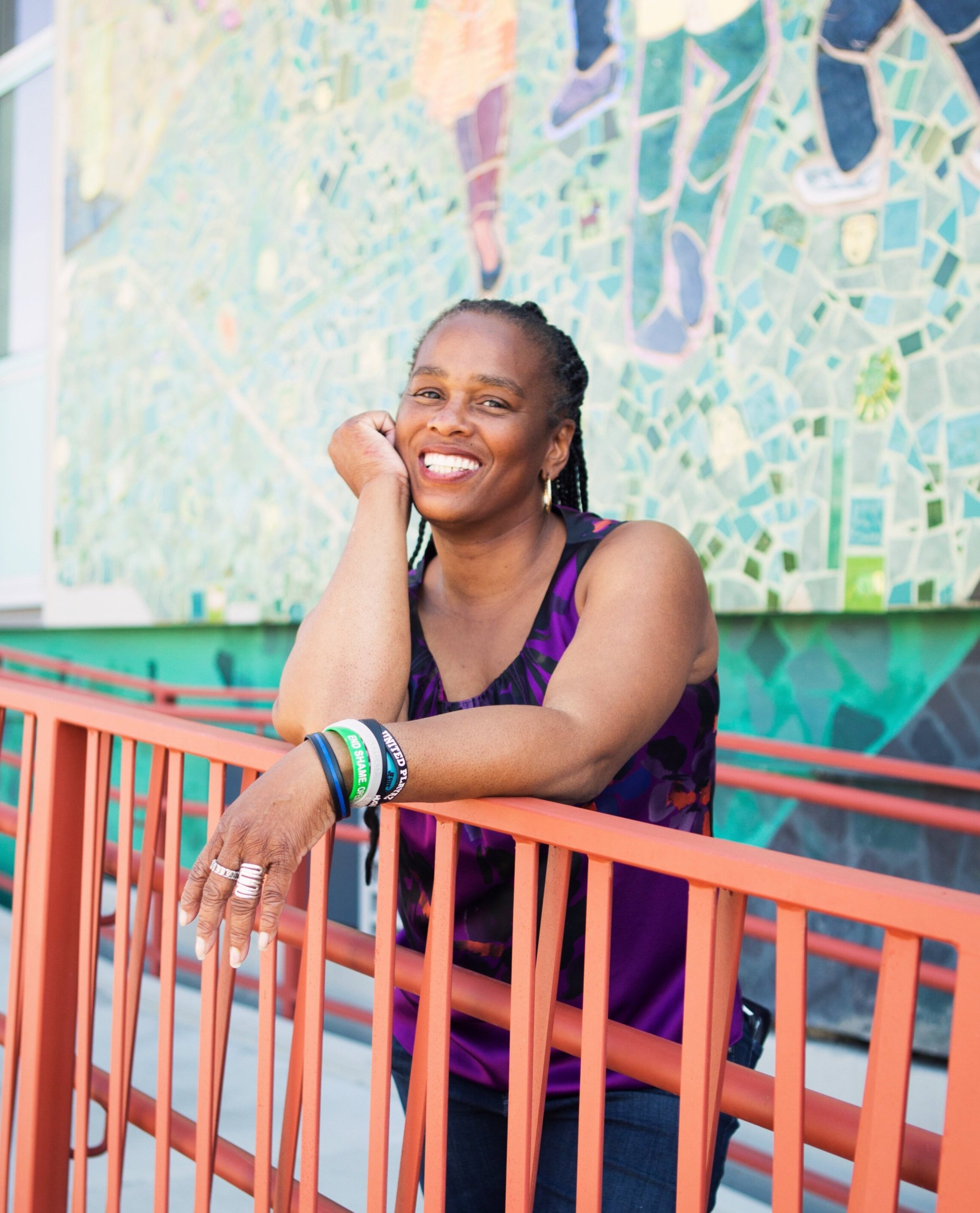Better Brands: Giving Back with Purpose
This gallery celebrates Better Brands—a collection of inspiring small businesses that went above and beyond by contributing auction items to Seismic Sisters’ Daytime Disco to raise support for GLIDE’s Women’s Center. Each photo represents not just a product, but a commitment to community, compassion, and equity.
These generous contributors are redefining what it means to be an enduring brand by putting values into action and standing in solidarity with the local community. We thank them for using their platforms to uplift others and help create real, lasting change.
Swipe through and discover our Better Brands series.
HARA
HARA is a home goods and lifestyle brand by Keesa Ocampo that curates handcrafted goods by women and indigenous artisans in the Philippines. Launched in 2022, two months after the birth of her son, she brought her passion project and childhood dream to life. From woven tableware to hand-carved wooden trays, capiz decor to tropical handbags, Hara brings tropical paradise to every home.
In the islands of the Philippines, ‘hara’ was a pre-colonial Malayo-Sanskrit title given to the highest ranking woman in a community. Like much of herstory, the word no longer exists, unlike its male counterpart, 'hari,' which means 'king.' Through thoughtful curation, HARA strives to reclaim the rightful place of women artisans in the global marketplace.
Instagram: @houseofharaofficial
Orinda, California
SPOT THE WITCH
Ariel is a second-generation astrologer, tarot reader, poet & intuitive. Her passion is activation. She studied astrology at Kepler College and tarot under the guidance of Lindsay Mack. She’ll be offering personal intuitive tarot readings at Daytime Disco. Book a full astrology or tarot session with her anytime.
Instagram: @spot_the_witch
Lafayette, California
THE ALTON HOTEL
The scenic Alton Hotel offers all amenities you could want–and then some!–from a getaway stay. From fitness centers to pet-friendly rooms, the award-winning Alton Hotel takes your unique experience personally and strives to make all your wishes come true. Spas, wellness programs, social hours, and next-level food and wine make this a standout stay that is sure to make your time away from home unforgettable.
altonhotelsf.com
Instagram: @altonhotelsf
San Francisco, California
Barbara Lee
Barbara Lee is a Filipina jewelry maker, artist and crafter that tells stories through her creations. She honors her roots and cultural heritage and tells herstory through every piece in her collections. Barbara’s handmade jewelry is created from exceptional elements, sourced from trusted global sellers or derived from antiques at markets. The thoughtfulness and one-of-a-kind nature of her creations is what big brands cannot recreate.
Centered around sustainability, every vintage gem or relic is reimagined for modern wear and infused with modern luxury for ultimate wearability. Barbara believes that everyone should have access to special pieces that feel luxurious without a cost to the planet. A percentage of every purchase also goes directly to supporting Filipino children.
BarbaraLee.co
Instagram: @bybarbaralee
San Francisco, California
BOTTLE BARN
Located in scenic Sonoma County, Bottle Barn is treasured by the locals for its vast selection of spirits, affordable and accessible prices, and passionate staff. It has been a community staple since 1990.
Bottle Barn’s mission is to make buying all types of alcohol a fun, knowledgeable and seamless experience. Upon entry, clients are greeted with friendly professionalism and a wealth of expertise from the Bottle Barn team, who are eager to help match them with the right choice from their large offerings. The brand is committed to making this experience shopping for alcohol the most memorable, affordable and enjoyable their clients will ever have.
bottlebarn.com
Instagram: @btlbarn
Sonoma, California
CHEF TU DAVID PHU
Chef Tu David Phu is both a San Francisco Chronicle Star Chef and partner of San Francisco’s well-known Gigi’s restaurant, a well established wine bar that draws its inspiration from Vietnamese cuisine. Raised in Oakland but with roots tracing back to Phu Quoc, Vietnam, his family’s legacy is grounded in a long-standing and well-loved artisanal fish sauce–and arguably where his love of food and cooking comes from.
While his career has led him to garner experience in perfecting various types of cuisines–from traditional American foods to classical European cooking techniques–his profound connection to his Vietnamese heritage and what he refers to as the “memory of taste” always reverts him back to his roots and the presence of incredible Vietnamese food offerings in the Bay Area. For this reason, he named his latest book “The Memory of Taste,” which is more than just a cookbook–it’s a celebration of cultural inheritance. From themes of frugality, zero-waste cooking and practical eating, Memory of Taste is a playful collection of recipes that marry Vietnamese cuisine with California sentiment–which highlight Chef Tu’s unique culinary style and the ancient wisdoms that nurtured him to success.
cheftu.com
Instagram: @cheftudavidphu
San Francisco, California
DOT WINE
Dot Wine is a Sonoma-based husband and wife duo that specializes in the high quality vine of the region. Wise Lise Asimont has over twenty years of experience in winemaking and is ultra talented in her expertise. Having worked for several of the biggest world-renowned wineries and brands in California, Lise is meticulous about managing every inch of their vineyards to never stop optimizing Dot’s wine quality while partnering with her husband to promote sustainability and responsible land stewardship.
Husband Shawn has over thirty years of experience in gardening and landscaping, employing his art degree to create beauty in nature. Together, they team to offer meticulously crafted wine with a sustainable sentiment that encourages the respect of nature–employing techniques to work with it, not against it. Thus, Dot Wine is the purest unit of both form and function–a direct pipeline of vineyard to bottle.
dotwinery.com
Instagram: @dotwinerocks
Sonoma, California
INTERNATIONAL ORANGE
Across the bridge in Marin, IO is now perched above the hustle and bustle of the Marin Country Mart lawn. Inside, the bright, stripped-back space works as a platform for a thoughtfully curated selection of skin and body care, artisan wares and daily wellness essentials. Curved lines and natural light create a seamless flow between the indoors and outdoor patio, where guests can take in breathtaking views of the Bay and the iconic Mt. Tam.
Expertly trained staff guide guests through therapeutic treatments and customized facials. In between visits, guests can create their own sanctuary at home with International Orange Essentials, a head-to-toe range of organic and wild-crafted products designed to elevate the everyday. In our sanctuary, International Orange invites respite, ritual and regular renewal while fostering inner peace, relaxation and self-care for all.
internationalorange.com
Instagram: @iospawellness
Larkspur, California
MALAYA BOTANICALS
Malaya Botanicals stands as the first Filipina-owned cannabis brand and a family-operated CBD health and wellness company. Its founder Pia T. Barton is dedicated to leveraging her business to destigmatize cannabis while empowering women of color to take charge of their own health and explore alternative healing methods. With the help of CBD based products, Malaya Botanicals believes in giving women back their power to heal and care for themselves long-term in the easiest and most luxurious way possible.
Malaya focuses on its impact, hoping to reach global communities while campaigning for education and awareness. They do this by advocacy and empowerment of women’s health and wellness by making CBD accessible to those who need it most. Pia and her team are diligent about using the highest quality CBD in their products and work hard to center women’s health through community support wherever it’s needed most. Explore Malaya’s range of wonderfully scented products, from oils to candles, and find what you need most–whether it’s vigorous pain relief or subtle soothing treatments, Malaya is here to help with all.
malayabotanicals.com
Instagram: @malayabotanicals
Alameda, California
OF THE ROOT
OF THE ROOT is a brand that explores the feelings of unhurried living. For those who move slowly with softness and intention, for those who enjoy the organic shifts in life and in love and for those who trust in an awakened realm of beauty, all seeped in culture.
OTR started as an invitation to discover the wonders of Ayurveda; an ancient healing system from the eastern shores in India. It has since evolved into collaborating with the earth to create products that encourage mindful living, with a focus on beauty, quality and sustainability.
oftheroot.co
Instagram: @oftheroot
Oakland, CA
OLFACTORIE
“Discover cities through a scent journey” is the essence of Olfactorie’s candle line–and their spa has been providing exceptional holistic care and therapies since 1999.
Olfactorie Candles was intentionally created to connect the power of place with the memory of scent–delivering reminiscent memories of both landmarks of places and eras of time. Crafted in Oakland by skincare specialist Liz Nelson, Olfactorie employs both soy wax and the highest quality essential oils through handmade techniques. The wood wicks are derived from recycled cedar and cherry wood, and are free from all toxins and harmful chemicals. Transport yourself to another city, to a fond but distant memory, to a place you dream to visit through the luscious scentscapes that Olfactorie offers.
olfactoriecandles.com
Instagram: @olfactoriecandles
Oakland, California
THE PILATES SCHOOL SF
The Pilates School SF is an accredited school dedicated to the teaching of Classical Pilates. Most students come for personal enrichment and find a supportive and inclusive community where they can achieve physical, emotional and mental goals through movement. They work with all bodies and all budgets to meet them on whatever level they are, and are thrilled to support GLIDE's Women's Center.
The Pilates School founders are Black, queer, neurodivergent, fat, and excited to show what true Classical Pilates can do for the body and spirit. Their team consists of people that don’t fit the traditional mold of a “pilates body,” which creates an inviting and inclusive environment for all to participate. Within minutes of study at the Pilates School a student is shown that "incredible at Pilates" is not a body type–which speaks to the very mission of their school of thought.
pilatesschoolsf.com
Instagram: @pilatesschoolsf
San Francisco, California
PRETTY PENNY
For 18 years, Pretty Penny has been a trusted name in the vintage industry, known for curating high-quality, inclusive silhouettes at accessible prices, but Pretty Penny is more than a shop–they are a community. With a focus on social and racial justice and uplifting those most disenfranchised in the local neighborhood and beyond, Pretty Penny employs its longstanding legacy in Oakland to leverage awareness, collective help and give power to those who need it most. A step into Pretty Penny not only offers you a plethora of unique and extraordinary vintage items, but also comes with care, empathy and love from the owner Sarah and her teammates.
Expect to find both stellar shopping scores and community solidarity within the world of Pretty Penny. Beyond store hours Pretty Penny holds events that invite the community to connect, share and provide resources with one another. They strive to build a vibrant neighborhood where all are welcome, both in-store and online, that values sustainability, individuality, and attainable style. Pretty Penny is a beloved community itself that believes in the power of small business and using that power to help the greater good.
prettypennyclothing.com
Instagram: @prettypennyclothing
Oakland, California
TINY FOREST PHOTOGRAPHY
Tumay Aslay, an award-winning fine art photographer specializing in newborn, maternity, engagement, family and baby photography. Her ability to highlight special moments of love and connection, coupled with her infusion of feminine energy creates a captivating and poignant series of captured moments regardless of the occasion. Her work is known for its emotional depth and exquisite artistry, and has been featured in well regarded publications like the Huffington Post. Tumay has a natural skill for capturing intimate, natural moments that immortalize life’s most meaningful moments.
tinyforestphotography.com
Instagram: @tinyforestkids
San Francisco, California
WeSparq
WeSparq is an Emmy-award winning brand and marketing agency that supports businesses through the positive impact design of brands, campaigns, and content. By empowering brands to find their voice and show up values-forward, WeSparq supports organizations that drive business by thinking digital-first, creating with empathy, and being a force for good in their milieus of influence. WeSparq offers original content creation, thoughtfully considered marketing strategies, and plans for growth tailored directly to the unique needs of every individual client–all while leading with care, empathy and community.
wesparq.co
Instagram: @wesparq
Orinda, California
Sponsored by

































































































